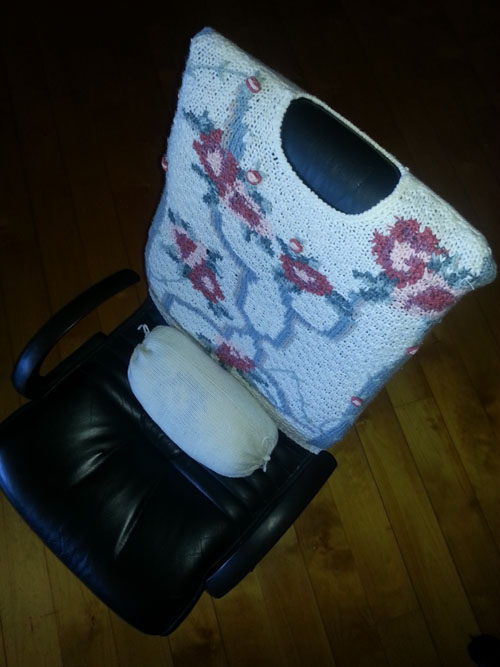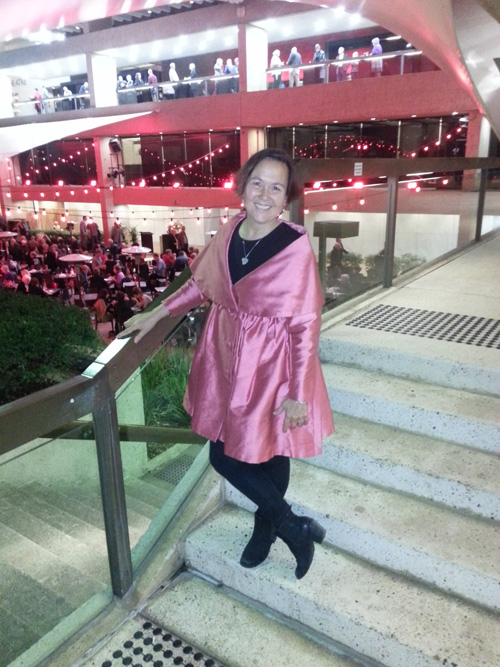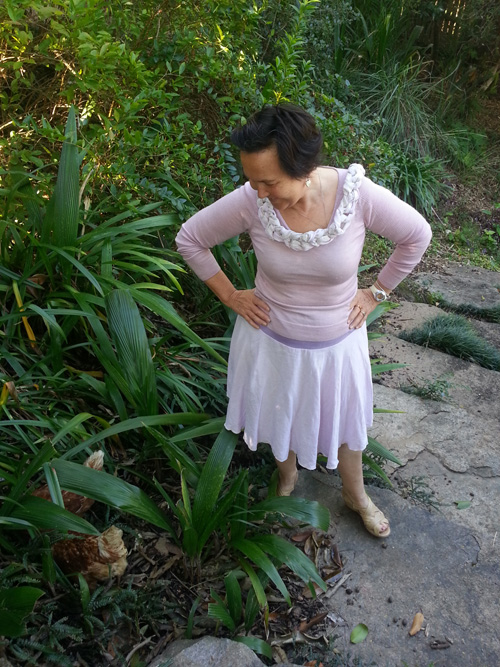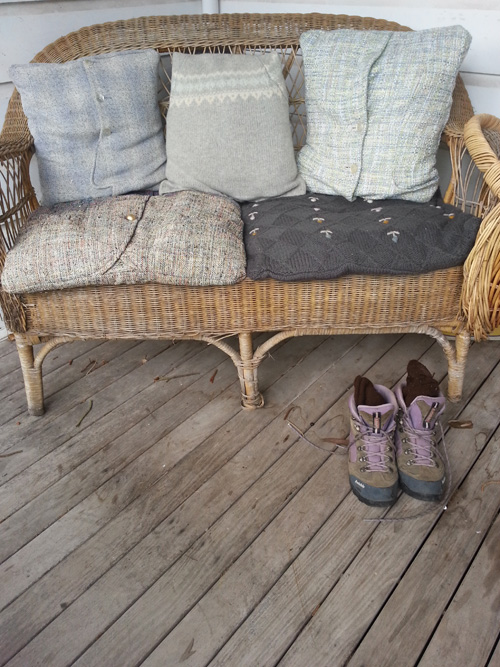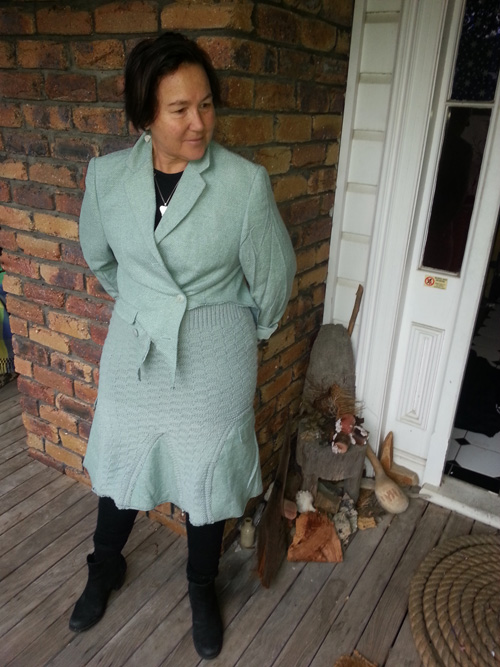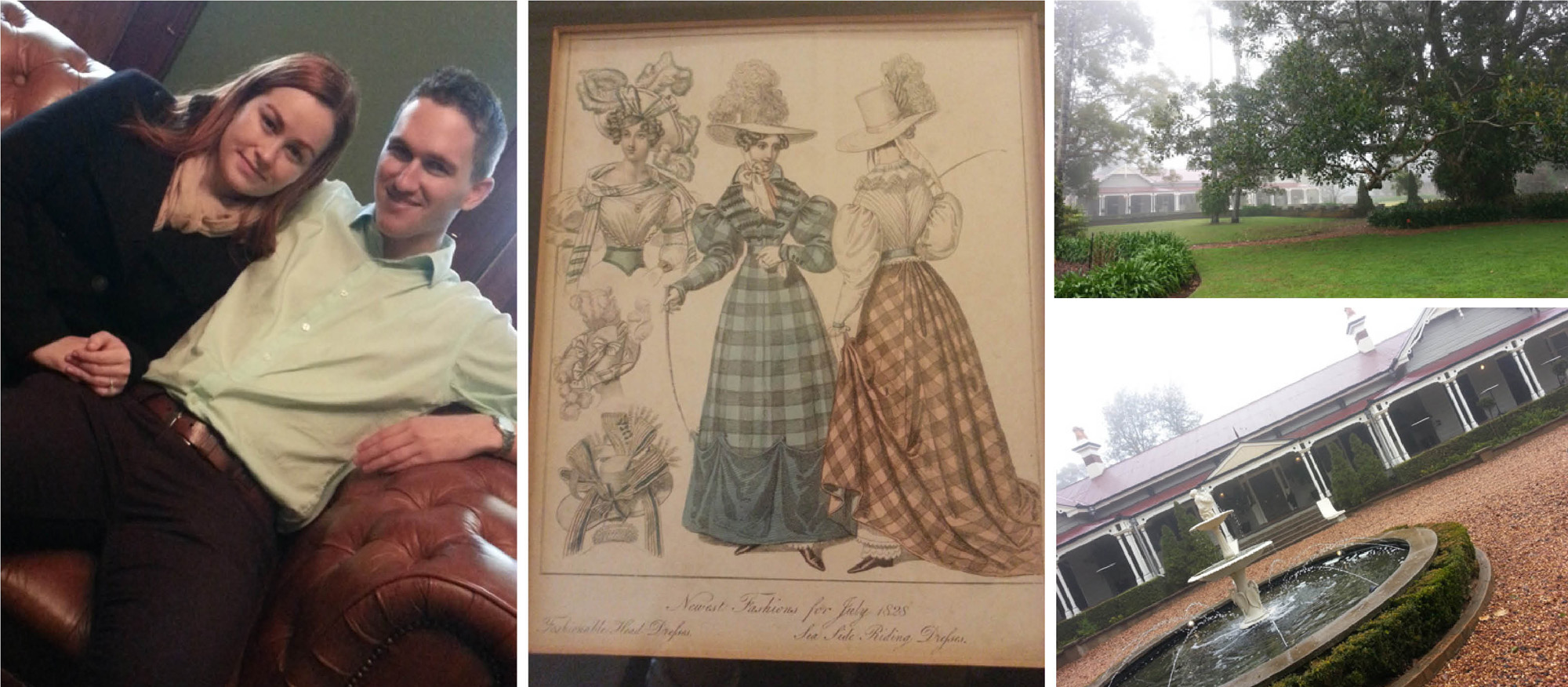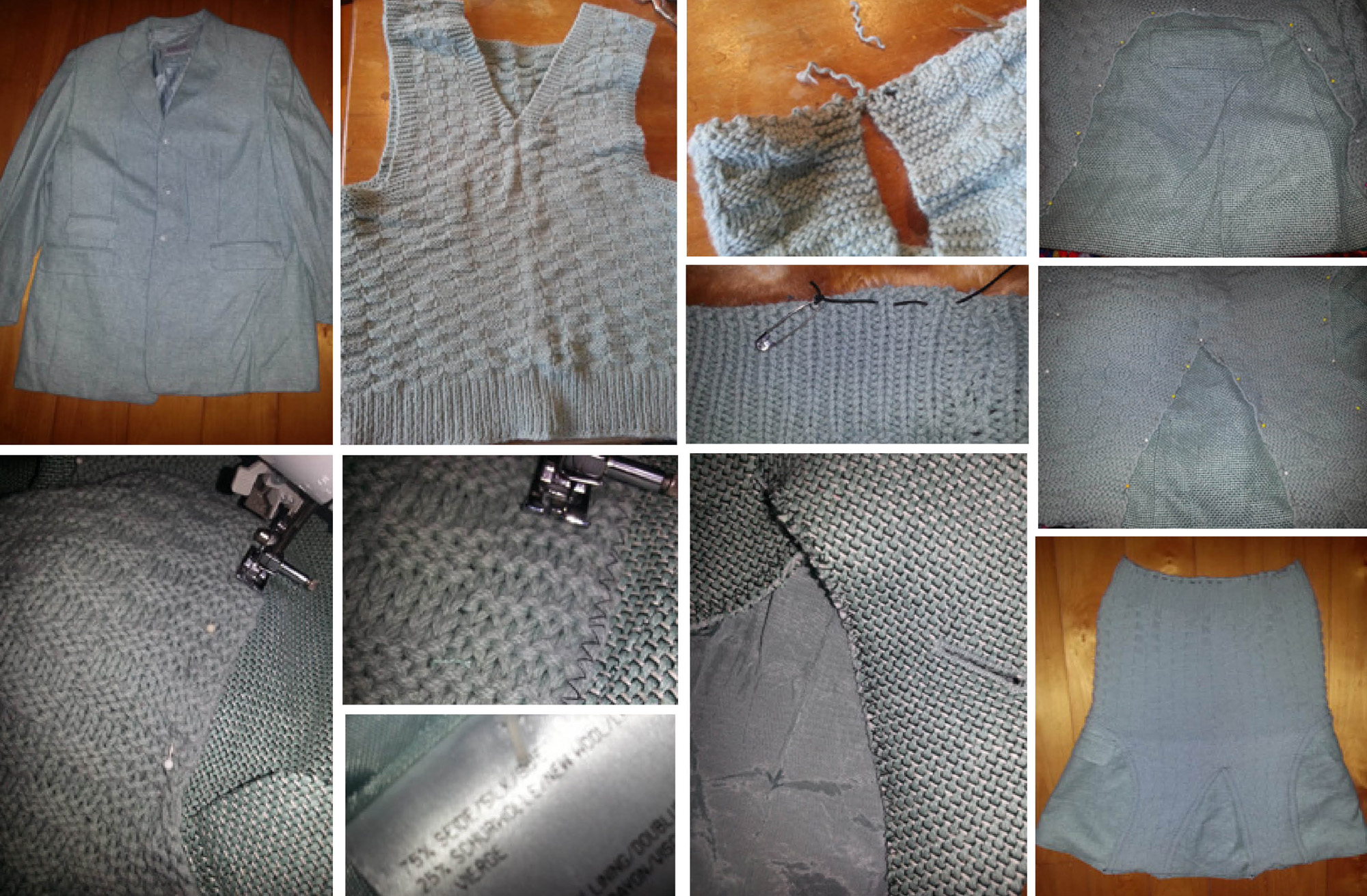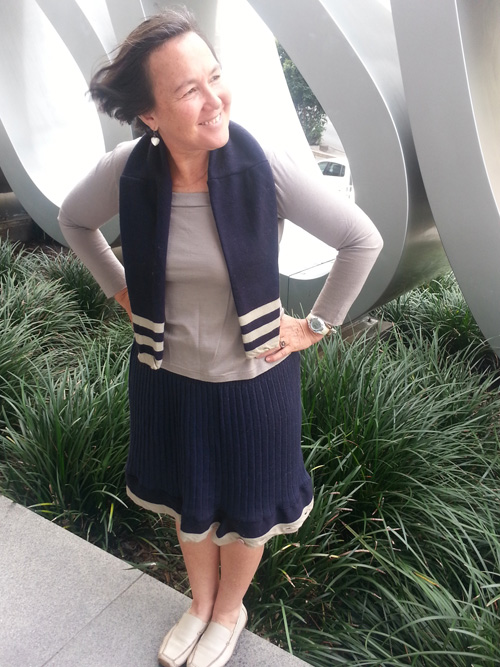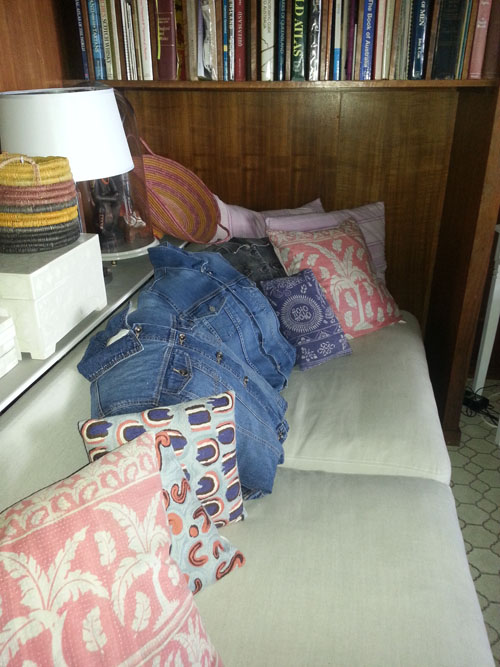 I loved seeing denim jackets multi-tasking as cushion covers when visiting my friend Cazza yesterday.
I loved seeing denim jackets multi-tasking as cushion covers when visiting my friend Cazza yesterday.
It’s great to have others involved in upcycling as together we rethink our relationship with clothing and its impact on our environment.
In the same way we appreciate the influence food has on our health and well-being, we are coming to consciousness about clothing impacts on ecological health and sustainability.
It is admirable to see Levi Strauss quantifying the life-cycle assessment of denim jeans as part of the company’s sustainability agenda. And as consumers of clothing products, we can also make a difference by washing less, using cold water, line drying, and finding alternative homes or uses for clothing when we’re not wearing them because they’re too big/small, out of vogue or season.
